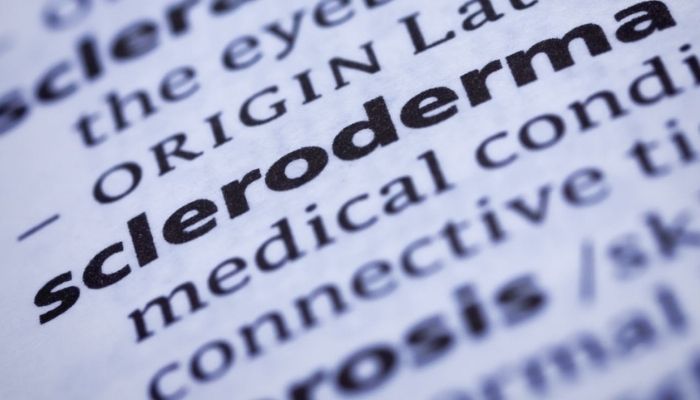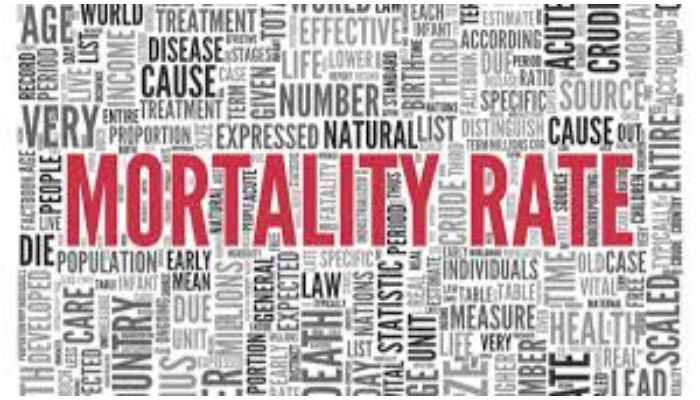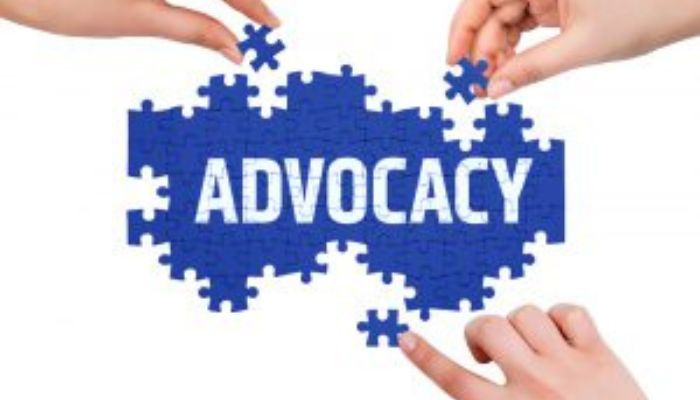|
For those of you new to our website and wanting to know a little more about Scleroderma, we hope this article gives you what you are looking for. If you want to ask questions from others on the same path, please don't hesitate to reach out via our FB pages. Scleroderma is a chronic disease that affects the skin and connective tissue, the tissue that supports and holds organs together, and is also found in the joints.
The hallmark of scleroderma is thick and hardened skin caused by excessive production of collagen, a protein that is the main component of scar tissue. This scar tissue can accumulate in and damage organs, including the heart and blood vessels, and the lungs, stomach, and kidneys. Females are about four times more likely to develop scleroderma than males. Disease onset typically occurs between ages 35 and 50, though people of all ages can be affected. Causes Scleroderma is an autoimmune disease, meaning it is caused by an overactive immune system that mistakenly attacks the body’s own tissues. The resulting excessive inflammation damages the skin and affected organs. It is a complex condition, and the underlying disease process is not well understood. It is thought that the disease results from a combination of genetic and environmental factors. Scleroderma is not contagious, infectious, or cancerous. Symptoms Symptoms of scleroderma vary among patients, and can range from very mild to life-threatening depending on which parts of the body are affected and the extent of organ involvement. A mild case can become serious if not treated properly. Characteristic symptoms, besides patches of thick and hardened skin, include contractures when skin stiffens over joints, skin ulcers (sores), calcinosis — when lumps of calcium form under the skin — and Raynaud’s phenomenon, in which the fingers and toes feel numb, prickly, or frigid in response to cold temperatures or emotional distress. Manifestations affecting internal organs include damage to muscle and bone tissue, shortness of breath, an abnormal heart rhythm, a burning sensation in the chest (heartburn), difficulty swallowing, blurred vision. A scleroderma renal crisis is possible in some systemic scleroderma (mentioned below) patients. This renal, or kidney, crisis is a serious disorder characterized by a sudden onset of high blood pressure, progressive kidney failure, hypertensive encephalopathy (brain dysfunction or damage due to high blood pressure), and/or microangiopathic hemolytic anemia, or anemia due to the red blood cells being sheared (ripped apart) as they pass through small blood vessels. A columnist praises her husband's approach to being a spouse caregiver by Lisa Weber We toasted to 18 years as a married couple while looking out over Tampa Bay, Florida. My amazing husband, Ross, had planned out every detail, from the surprise dinner reservations in the city to the romantic sunset-watching at the park. If you know me, you know pulling off a surprise is nearly impossible. Ross endured a week of grilling questions and still kept the itinerary under lock and key.
Although it was a beautiful night, we had to accommodate my blue-toned hands, a result of Raynaud’s, and sit indoors. But we moved forward with the evening and didn’t pay my disease much attention. And even when my gastroparesis limited my options on the menu, we chose to ignore it for the night and focus only on the happy memories we’ve built together. I even drank wine without worrying about the insufferable inflammation it would cause the next day. Because every now and then, it helps to take a vacation day from scleroderma. SPIN was founded by McGill University researcher Dr. Brett Thombs as a partnership of researchers, scleroderma clinicians, patient organizations, and patients, who work together to develop and test online programs to help people cope with important problems related to scleroderma. SPIN was launched in 2011 with seed funding from the Scleroderma Society of Ontario and Scleroderma Canada.
SPIN maintains a large cohort of over 1,800 scleroderma patients, recruited by scleroderma clinicians from around the world. These patients complete regular online questionnaires to help researchers understand their challenges and support needs. SPIN’s mission is to work with people with scleroderma to identify their needs and prioritize research in areas most important to them and to develop, test, and disseminate accessible patient programs that improve quality of life and empower people with scleroderma and their loved ones. See their letter of thanks in this link. Patients in racial minority groups found to be more dissatisfied with their lives by Patricia Inácio, PhD of Scleroderma News More than 30% of people with systemic sclerosis (SSc) are dissatisfied with their lives, and higher levels of dissatisfaction are reported by racial minority groups, a U.S.-based study has found.
The spiritual well-being of patients was the strongest contributor to life satisfaction scores. These scores were found to be significantly lower for Black, Asian, American Indian, and Alaska Native patients. “Spiritual well-being is particularly important in understanding life satisfaction in people with systemic sclerosis,” researchers wrote, adding that this should prompt further research to “assess and examine spiritual well-being and its impact on life satisfaction in a larger and more diverse systemic sclerosis sample.” The study, “Factors associated with life satisfaction in systemic sclerosis: Examining the moderating roles of social support and spiritual well-being,” was published in the Journal of Scleroderma and Related Disorders. Life satisfaction often reflects mental health status SSc, also known as scleroderma, is a chronic autoimmune condition that causes inflammation and fibrosis (scarring) of the skin, but it can also affect internal organs. Symptoms can include joint pain, fatigue, and gastrointestinal problems — all of which increase functional limitations and affect quality of life. Life satisfaction, a parameter that reflects how people evaluate their lives as a whole, is one of the tools for assessing quality of life. Life satisfaction often reflects mental health status and has been associated with mortality risk. However, few studies have addressed life satisfaction of SSc patients. Prior research has indicated that social support is important to help people with SSc cope with disease-related challenges, and that spiritual well-being has a positive impact on their perception of well-being. To understand the effects of spiritual well-being, integrated with social support and functional limitations, a team of researchers in the U.S. analyzed data from the University of California Los Angeles Scleroderma Quality of Life Study. SSc patients, 18 and older, completed questionnaires about their demographics, symptoms of depression, functional limitations, social support, and spiritual well-being. Functional limitations, social support, and especially spiritual well-being are all associated with subjective well-being in people with SSc. Body betrayal is a common experience among people with chronic illness by Amy Gietzen from Scleroderma News After I was diagnosed with scleroderma in 2001, I found myself having some strange thoughts, such as, “What’s wrong with me? My body hates me. I hate my body. What did I do to deserve this? Why can’t I just be normal again?”
While many of the feelings I experienced are hard to describe and identify, I vividly remember the feeling of betrayal coursing through my veins for months after my diagnosis. Because scleroderma can affect people in so many different ways, and because symptoms can ebb and flow and change over time, it can be easy to think that your body is out to get you. For me, it felt like my body was betraying my trust in it. I can’t recall a time since my diagnosis that I wasn’t in pain or, at the very least, uncomfortable with the changes I was experiencing. In my first few years with scleroderma, I felt like I had no control over what was happening to me. At any given time, my hands would cramp, my muscles would stiffen and tense, and my skin would itch so intensely that I needed to ice it with cold packs. Sometimes we push ourselves so hard we lose sight of what's important - By Lisa Weber All the bedroom doors were closed and everyone was tucked in under their warm comforters. Except for me. I had taken on the 2013 holiday season like it was another full-time job. Without enough daylight hours to squeeze it all in, I was working the graveyard shift and bleeding myself dry.
For a long time, I evaluated my value based on how much I could accomplish for myself and others. Acts of service, checked boxes on task lists … but there’s a trap to this method of pleasing people. I didn’t want to say no! I accepted every invitation. I committed to every cookie party, holiday light festival, and gift exchange. I didn’t want my kids to miss out, and I certainly didn’t want to let down friends and family. Budgeting and planning ahead are key for columnist Amy Gietzen It’s beginning to look an awful lot like the holidays! Everywhere I go I see festive decor and signs for holiday sales. I guess I shouldn’t be surprised to hear ”Jingle Bells” and ”White Christmas” on the radio in November.
The hustle and bustle of the season often brings long lines, high-calorie meals, delicious desserts, and, most importantly, the exchanging of gifts. I love the tradition of gift-giving and the smiles it brings to the faces of my close friends and loved ones. Seeing the excitement that glows on my niece’s face as she tears through sparkling paper and ribbons is priceless. However, what’s hard for me is the cost of those lovely gifts. I always wonder how I will survive the holidays and afford presents on my income. After confronting it in my teens, I'm coming to terms with it at 40 by Amy Gietzen The word “mortality” has ping-ponged around my brain from the moment I was introduced to the word “scleroderma.” I’ve dealt with the physical and emotional burdens of pain, depression, disabilities, and loss for over two decades.
As a teenager, living with scleroderma made me angry. I bottled up all of my rage-induced emotions so I could fight for my life and find adequate medical care. Nothing I went through during those years was straightforward. My life then seemed out of control and forever changed. I had to sift through granules of emotional sand to find balance, and all the while my mortality was a specter in the distance, watching intently. I lived out my turbulent 20s juggling work, school, and scleroderma. Each day one would outweigh the other until eventually, I lost my rhythm. Nursing school was my happy place, and even though I was in constant pain from lifting patients and making hospital beds, I loved every minute of honing my craft. Preparation and self-advocacy have made a difference for this columnist -by Amy Gietzen | October 12, 2022 Anyone living with scleroderma knows it is a difficult disease to manage. As patients, we are constantly flustered by a disease that seems to have no boundaries. Symptoms and treatment strategies vary from person to person, and scleroderma has no cure.
Because of this, every scleroderma patient has the unfortunate task of becoming their own self-advocate, which entails learning through lived experiences. Patients must learn how to keep up with treatments, manage symptoms, and cultivate resources, which include people I refer to as “reliables,” or those I trust, along with medical specialists and others in my support network. For columnist Lisa Weber, corns are a painful side effect of scleroderma Did you know that gymnastic balance beams are made of aluminum and wrapped with a thin layer of polyethylene foam and leatherlike material? If a stunt is landed incorrectly, it’s like landing on concrete.
When I was a gymnast, I once missed the landing of a front flip and my heel smacked down — straight through to the metal. At that moment, I was certain I’d shattered the bone. But it turns out that the heel is incredibly sturdy, so the bone was only bruised. Painfully sore for days, but fine otherwise. Because scleroderma has broken down the padding on the soles of my feet, “skin and bones” now means something new. My feet are now structured eerily similar to the balance beam: hard bone wrapped in a thin layer of skin. The padding is almost nonexistent. |
AuthorScleroderma Queensland Support Group Archives
July 2024
Categories
All
|
Scleroderma Association of Queensland
©Scleroderma Association of Queensland. All rights reserved. Website by Grey and Grey.










